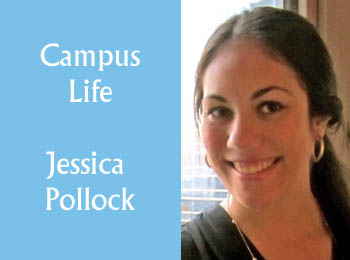The University of Western Ontario last month undertook its third rebranding initiative since its inception as an institution.
The university was founded in 1878 as an academic branch of the Church of England, initially named the Western University of London Ontario. Early in the 20th century, the university secularized, and in 1923, was renamed the University of Western Ontario.
Fast forward to the present day. In January, it was rebranded as Western University Canada, “for communication, marketing and web purposes,” the university says on its website. I now enjoy occasionally referring to as WU (pronounced “woo”). Its new name is a modification of its original name in an attempt to become more globalized, although its official name remains the University of Western Ontario, and it “will appear as such on diplomas and official documents.”
There were two major motives behind the rebranding project.
First, Western president Amit Chamka intends to transform the university into a more progressively international institution. Since his appointment as president in 2009, the number of international students at Western has substantially increased. Chamka hopes that, as a result of the rebranding project, the international student community will continue to expand because the institution will be more easily recognized on a global scale.
Second, “establishing a more unified visual identity for Western,” its communications webpage asserts, was necessary to eliminate its former identity confusion. Previously, very few people would refer to the institution by its legal name. Rather, the vast majority, in everyday discourse, would call it simply Western. Thus, it became natural to combine Western’s identity with its usual street name.
Western’s new rebranding reminds me of the campaign launched last year by LAPAM, the Israeli government’s official advertising unit, in conjunction with Bodden Partners, a New York-based marketing communications agency, to promote Israel’s tourism industry.
Focusing on this unique industry is a clever action plan that hopes to reverse prejudiced and preconceived notions of Israel and divert attention from political conflict.
Just as Western rebranded in order to attract a larger international student population, Israel has benefited from an initiative in Canada to promote increased tourism on a national scale.
For its 2011 national ad campaign, LAPAM distributed newly designed displays across Canada, particularly in Montreal and Toronto airports, in Toronto’s Airport Express Bus and in some TTC bus shelters.
The displays market numerous Israeli destinations including the Sea of Galilee, the Ramon Crater, the Church of the Beatitudes, Masada, the Dead Sea and the Church of the Holy Sepulchre. By exhibiting landmarks that interest Jews and non-Jews alike, Israel hopes to attract a diverse array of individuals to explore the country’s fascinating antiquities.
As a result of the 2011 campaign, Israel experienced a 15 to 20 per cent increase in tourism from Canadian passport holders, making LAPAM’s efforts a worthwhile initiative.
Despite the reasons behind Western’s rebranding, the university received unexpected criticism following the announcement. Alumni were left bewildered, with questions about how to refer to the institution they graduated from. Current students are also having difficulty abandoning the name they are accustomed to.
I feel, however, that it’s a constructive step. Today, it appears that organizations and institutions want their identities to simply and clearly reflect who they are. The advantage of a straightforward brand is that names and symbols become distinguishable and easily recognized by the public. I believe that any institution can strengthen its identity if it engages in branding strategies similar to the one Western has undertaken.
